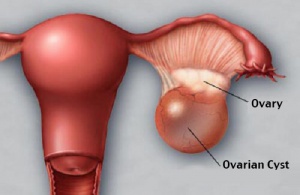How to Prevent and Detect Ovarian Cysts in Time


Reviewed and approved by the doctor Maricela Jiménez López
Even though they don’t pose any sort of health risk, it’s best to detect ovarian cysts early on to prevent any future complications.
What are ovarian cysts?
Ovarian cysts are small, liquid-filled bags that form inside or outside of a woman’s ovary.
They form when women are ovulating. During this time, a small follicle in one of the ovaries forms, which then breaks when the egg matures and is ready for fertilization.
After releasing the egg, the small sack or bag dissolves and disappears naturally. But if this doesn’t happen, or if the sack fills after the egg has been released, then it could become filled with water and increase in size. This leads to the formation of ovarian cysts.
What causes ovarian cysts?
A woman is at a higher risk of forming ovarian cysts if her menstrual cycles are irregular, she is undergoing fertility treatment, she has hormonal imbalances, or due to genetic factors.
How to detect ovarian cysts in time
Ovarian cysts generally don’t present any symptoms that could alarm a woman. However, there are a few cases in which some women can feel acute abdominal pain while doing certain activities.
When a cyst bleeds or bursts, it produces an intense pain that should be tended to immediately, as it could cause vaginal hemorrhages.
Another way to detect ovarian cysts is when a woman feels pain before beginning her menstrual cycle, or during sexual relations.
Other symptoms that could help detect ovarian cysts are:
- Nausea or vomiting
- Breast sensitivity
- Weight gain
- Urination problems
- Abdominal or pelvic swelling
- Pain in the lumbar region and thighs
- Combination of pain, fever and vomiting
If you have any of the previously mentioned symptoms, it’s best to consult a specialist for a pelvic exam that can confirm ovarian cysts.
If the doctor suspects this problem, he or she can confirm it by performing an ultrasound or an MRI. Blood tests can also determine if the cyst needs to be removed or not.
How to prevent ovarian cysts
To prevent the formation of ovarian cysts, you should keep certain recommendations in mind at home, which are easy to follow.
Follow a healthy diet
To prevent and treat ovarian cysts, it’s best to include more foods that are rich in fiber and water to reduce abdominal pressure.
It’s also recommended to include foods rich in vitamins and minerals, especially zinc, and vitamin B and C.
Hot water compresses
If you feel abdominal pain, it’s best to apply hot water compresses to reduce inflammation and alleviate pain.
Drink relaxing infusions
If you’re experiencing symptoms like pain or abdominal inflammation, it’s best to drink a chamomile, mint, or raspberry infusion. These infusions help prevent stress, provide a calming effect, and are perfect before going to bed.
Drink water
One simple and healthy habit like drinking water, can prevent the formation of ovarian cysts as it keeps the body well hydrated. It’s recommended to drink at least 8 glasses of water a day.
Drink dandelion tea

Dandelion is known for its diuretic properties that promote liver purification and toxin elimination. It also helps improve hormonal balance.
Keeping this in mind, this tea is perfect for preventing and reducing the formation of ovarian cysts.
Exercise regularly
Exercising helps regulate the hormonal cycle, and helps prevent abdominal pain and the formation of cysts.
Exercise also keeps you healthy in every sense of the word. Women who do physical activity tend to have less menstrual irregularities.
All cited sources were thoroughly reviewed by our team to ensure their quality, reliability, currency, and validity. The bibliography of this article was considered reliable and of academic or scientific accuracy.
- Stroedter, L. (2009). Management of ovarian cysts. In Essentials of Pediatric Endoscopic Surgery. https://doi.org/10.1007/978-3-540-78387-9_56
- Bottomley, C., & Bourne, T. (2009). Diagnosis and management of ovarian cyst accidents. Best Practice and Research: Clinical Obstetrics and Gynaecology. https://doi.org/10.1016/j.bpobgyn.2009.02.001
- Parigi, G. B. (2009). Ovarian cysts. In Pediatric Surgery Digest. https://doi.org/10.1007/978-3-540-34033-1_33
- Oliver, A., & Overton, C. (2014). Detecting ovarian disorders in primary care. Practitioner.
This text is provided for informational purposes only and does not replace consultation with a professional. If in doubt, consult your specialist.









